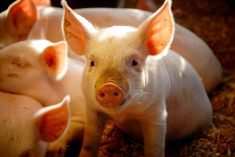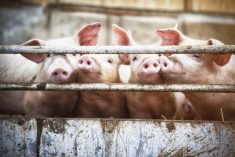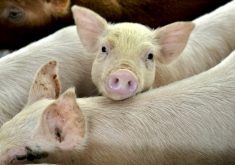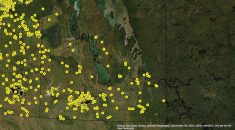Barns dodging PED might owe that to luck rather than robust biosecurity.
Andrew Dickson, the Manitoba Pork Council’s general manager, warns that some barns outside southeast Manitoba will need to heighten their guard if they hope to repel a serious risk of the disease.
“We’ve got odd stories of people saying, ‘Well I’ve never got the disease, so what I’m doing must be right,’ and you look at what they’re doing and they’re not following very strong biosecurity controls. All it means is they’re just lucky. They just haven’t got it yet,” he said.
Read Also
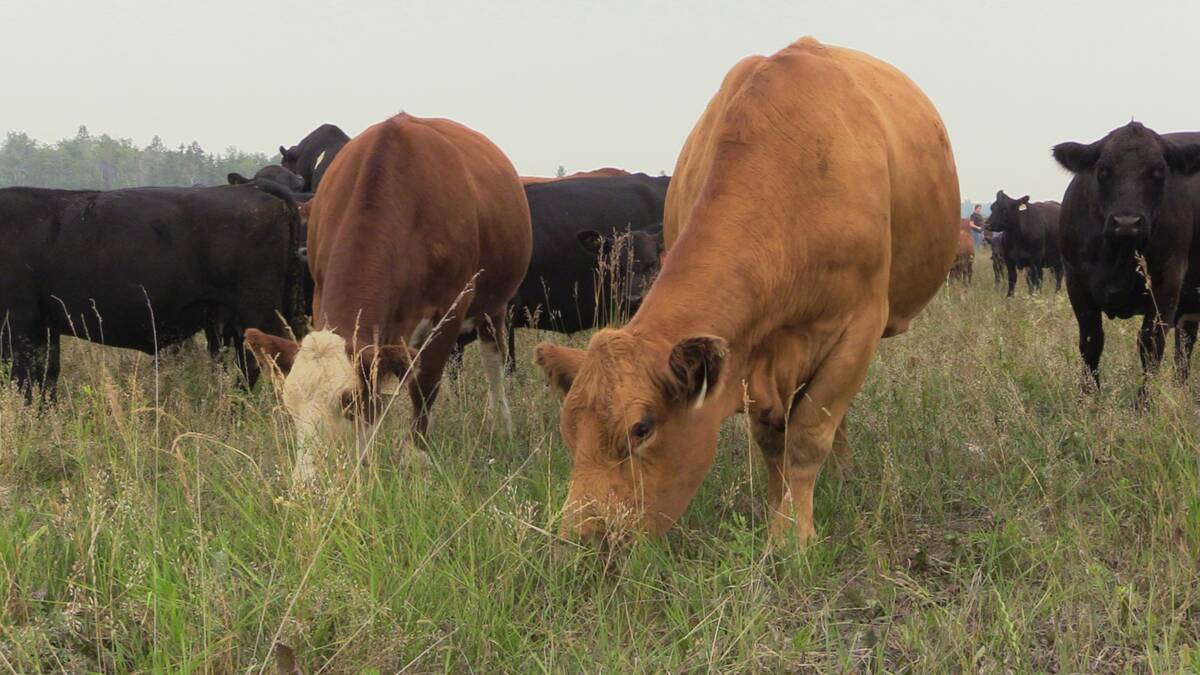
Feds drill for foot-and-mouth outbreak
Foot-and-mouth drill mocks up Canadian disease defence, looks for gaps, should an infection be found in the U.S.
Why it matters: This year’s PED outbreak has broken records in terms of geographic range, bringing more barns into the potential hot zone, but some barns in those newly impacted areas might want to re-evaluate their biosecurity plans.
That concern is especially valid in a year when PED has crept farther west and north than ever before. Ten cases were confirmed west of the Red River as of July 22, along with two cases in the RM of Whitemouth to the northeast. Even more concerning, one of those cases was found far west of the Red River Valley entirely. The Manitoba Pork Council reported a positive infection near Notre Dame de Lourdes earlier this summer, almost into western Manitoba.
That site will hopefully be clean of active infection in the next few weeks, Dickson said, although he noted the site would have to implement precautions to avoid a relapse.
That case has remained an outlier so far, to the relief of the pork industry.
Other cases in central Manitoba have been farther east, in areas such as Lowe Farm and Morris.
More barns are ramping up dust control in order to eliminate one risk of infection, Dickson said. Dry weather has increased dust-borne risk, he said, and high transport traffic on gravel roads, particularly those transporting infected pigs, dramatically increases the risk of the disease slipping out of control zones.
“We can find genetic viral material in dust inside the barns, but whether it’s viable or not is another question, and we haven’t been able to answer that definitively,” he said.
Wind was also noted as a potential disease vector during the 2017 outbreak.
Two cases were reported west of the Red River in 2017, although both were linked to known animal shipments while the cause of the westernmost cases this year was unknown.
The council is urging producers to control visitor traffic, ban dirty vehicles, avoid crossing paths with deadstock or garbage routes, take care washing and disinfecting trailers, keep street clothes away from the yards, change shoes when entering the barn, take note of where service providers and incoming animals have been and avoid sharing staff between sites, among other recommendations. A full list has been published on the council’s website.
The organization is also urging producers to join the Manitoba Co-ordinated Disease Response program. The online platform gives access to active infection locations, biosecurity resources and disease status updates, but requires members to share their own information.
As of June, membership lagged outside of southeastern Manitoba, where the program was pre-emptively launched in late 2017. About half of all hog producers had signed on at that point, compared to about 80 per cent in the southeast, the council’s swine health programs manager Jenelle Hamblin said earlier this summer.
A hard hunt
Some of July’s new cases came as little surprise, as farmers looked to finish recovering pigs.
“The aim is to try and reduce the number of pigs that have to euthanized and try and bring as many as possible to market without creating problems in terms of new infections,” Dickson said, noting that those pigs will be handled separately at the processing plant.
Some more far-flung cases, however, had no known link to animal transportation, including the worrisome western case near Notre Dame de Lourdes.
Disease tracking has been a “common problem” and a “major challenge,” Dickson said.
Investigators are often able to hone in on “three or four” factors that might have led to a barn’s infection, he said, but the sheer number of variables makes it impossible to isolate a concrete cause.
PED cases are up to 60, as of July 22.
The province’s chief veterinary office confirmed the virus in three new sow barns, three new nursery barns and six new finisher operations in July. Those are added to the 48 cases confirmed as of the end of June.
This year’s cases are still largely on track with Manitoba’s worst outbreak of PEDv in 2017. A total 62 barns had come down with the virus as of the start of August that year, numbers that eventually climbed to 80.
A number of farmers have vaccinated their sows, Dickson also said.
Saskatchewan’s VIDO-InterVac delivered a trial release of its PED vaccine in both 2016 and 2017 to help stem outbreaks.
The vaccine is given to sows, that then pass immunity on to piglets.




